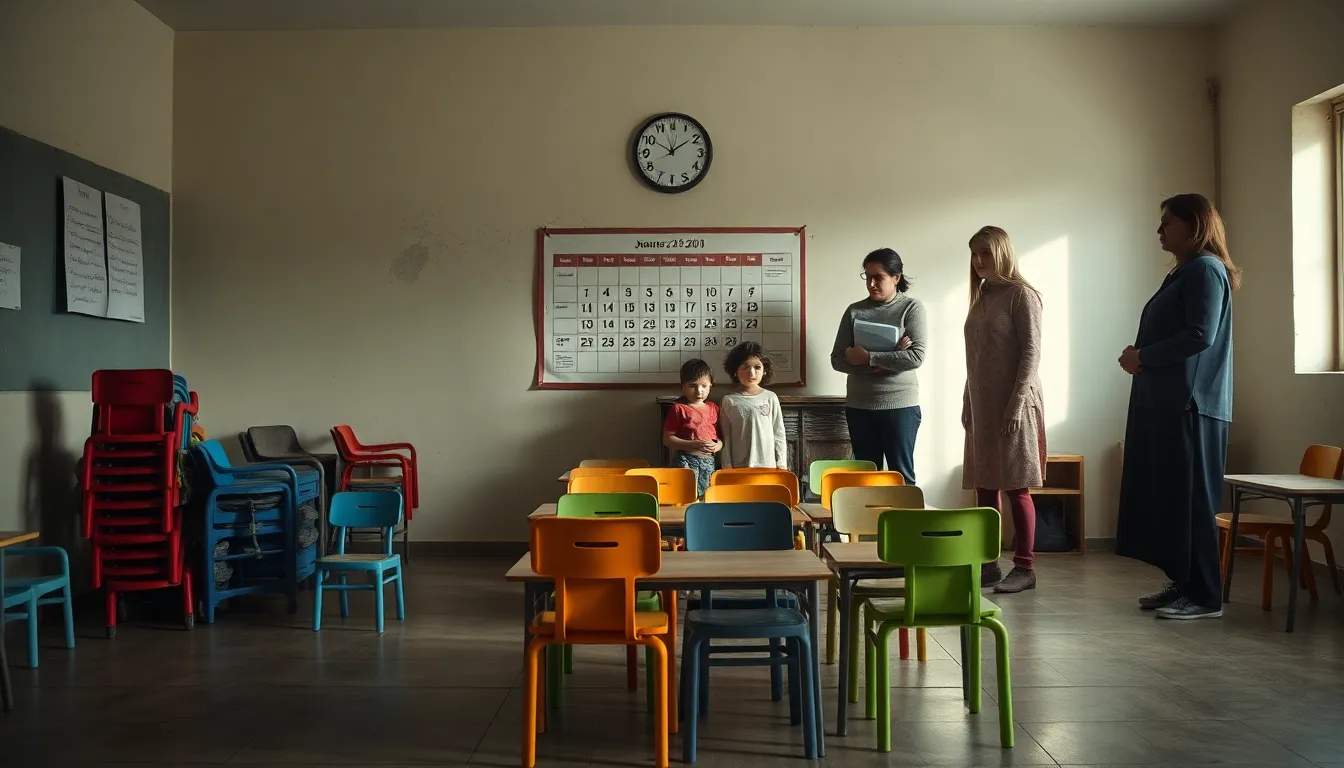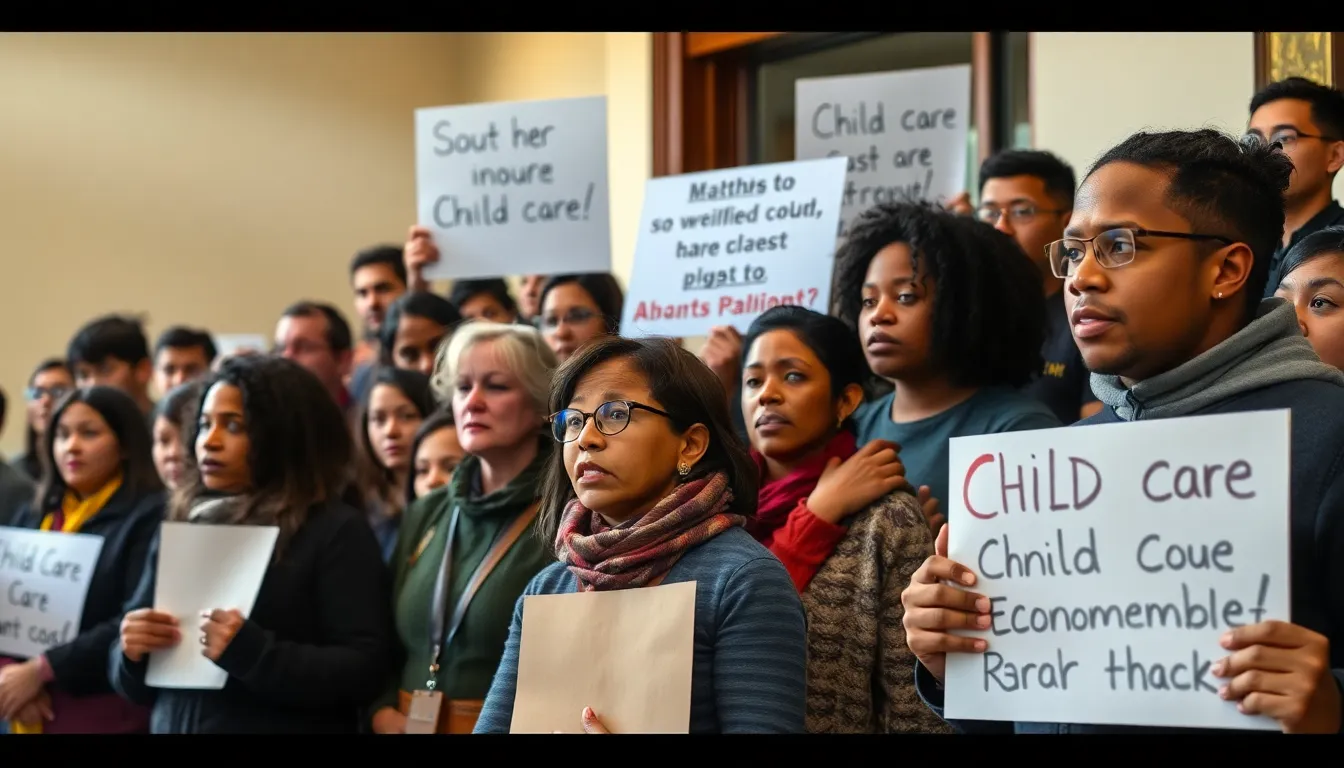Tempers flare as residents confront Salt Lake County Council members who voted to close day care centers, following a decision to eliminate $2 million in annual funding for four facilities by January 2026. This controversial move immediately impacts over 271 families, leaving them to navigate significant childcare disruptions and increased financial burdens.
Key Implications:
- Families’ Financial Strain: The closure of county-run day care centers forces over 271 families to find “hundreds more a month” for childcare, leading to difficult budget adjustments and jeopardizing long-term financial stability, particularly for vulnerable households.
- Political Stalemate: Two proposals aimed at mitigating the closures, including options for tuition increases and public-private partnerships, failed due to 4-4 party-line votes and a council member’s non-participation, solidifying the original decision despite significant public opposition.
- Reduced Childcare Accessibility: The elimination of four established facilities removes accessible and affordable childcare options in critical neighborhoods, potentially disrupting parental employment and financial stability, and shifting a substantial burden onto individual families.

$2 Million Funding Cut to Close 4 Day Care Centers by January 2026
The Salt Lake County Council, under Republican leadership, recently made a significant financial decision that has ignited considerable public outcry. They voted to eliminate an annual funding of $2 million allocated for four county-run day care centers. This controversial move directly impacts over 271 families in the region, with the centers scheduled to cease operations by early 2026.
This decision has led to considerable concern and frustration among the community. Indeed, tempers flare as residents confront Salt Lake County Council members who voted to close day care centers, questioning the rationale behind cutting such vital services for working families. The abruptness of the announcement has left many parents scrambling to find alternative childcare solutions.
The Council’s Rationale and Community Impact
The GOP-led council’s decision centers on a financial strategy to cut specific services deemed outside the county’s core responsibilities. Council member Aimee Winder Newton articulated a key argument, suggesting that using taxpayer money to subsidize care for 271 children is not equitable for all county residents. This perspective underscores a broader debate about the role of government in providing social services.
The immediate scope of these closures is significant, affecting four established facilities. These day care centers are located in key neighborhoods: Kearns, Magna, Millcreek, and Salt Lake City’s Fairpark neighborhood. These locations serve as critical support hubs for hundreds of local families. During the school year, 271 families rely on these centers, a figure that increases to nearly 300 during the summer months.
The scheduled closure date of January 1, 2026, looms large for the affected communities. This timeline gives families a little over a year to secure new childcare arrangements, which can be a challenging and often costly endeavor. The elimination of these county-run centers removes an accessible and affordable option for many parents, potentially disrupting their employment and financial stability.
The situation highlights a growing national conversation about the availability and affordability of childcare. While some states are exploring innovative solutions, the question of whether America will finally treat child care as a public good remains pertinent for many families. Such cuts often disproportionately affect low-income and single-parent households. The decision to remove $2 million in annual funding ultimately shifts a substantial burden onto individual families.

4-4 Party-Line Votes Block 2 Day Care Restoration Motions
Tempers flared as residents confronted Salt Lake County Council members who voted to close day care centers, creating a heated atmosphere at the Tuesday, November 4, 2025, meeting. Despite public outcry from nearly 100 attendees, two distinct motions aimed at either delaying closures or seeking public-private partnerships failed. Both proposals were met with identical 4-4 party-line votes, compounded by the non-participation of a fifth Republican council member, effectively blocking any reconsideration of the closures.
The political process unfolded with two specific proposals designed to mitigate the impending closures. Republican Council Member Aimee Winder Newton presented a plan to keep the facilities open through May, contingent on a 20% tuition increase for families. Following this, Democrat Suzanne Harrison proposed an alternative that sought no immediate closing date, instead focusing on public-private partnerships, also coupled with a 20% tuition increase. These motions were intended to provide a reprieve and explore sustainable solutions for the affected families. For broader context on related child care issues, explore discussions around providers’ concerns about rule changes to make child care universally accessible.
However, both motions met an unfortunate end due to the precisely split vote. The council’s vote count of 4-4 for both motions underscored a complete party-line division. Crucially, the absence of a vote from Republican Council Member Sheldon Stewart, who attended remotely but did not participate in these specific votes, proved decisive. His non-participation resulted in the tie, preventing either proposal from moving forward and solidifying the council’s original decision to close the day care centers.
The failure of these two proposals, despite the substantial public presence, left many attendees frustrated. The residents who came to confront Salt Lake County Council members witnessed their appeals fall on deaf ears due to the political stalemate. The proposed 20% tuition increase, while a burden, was seen by some as a necessary compromise to maintain services, yet even this was insufficient to sway the divided council. This outcome highlights the challenges in securing communal resources when political divisions are deeply entrenched, leaving families scrambling for childcare alternatives. The broader implications of such decisions often lead to important conversations about whether America will finally treat child care as a public good.

Families Anticipate ‘Hundreds More Per Month’ in Child Care Costs
The recent decision by Salt Lake County Council members to close day care centers has ignited significant public outcry. This controversial vote directly imposes severe financial burdens on local families. Many parents are now grappling with the immediate reality of hundreds of dollars in additional monthly child care expenses, a situation that has caused tempers to flare as residents confront Salt Lake County Council members who voted to close day care centers.
For individuals like Mackenzie Miller, whose youngest daughter attends the Magna Recreation Center, the impact is stark. Miller projects his family will need to find “hundreds more a month” for child care costs. This unforeseen expense forces difficult budget adjustments, including contributing “less to his 401(k)”, directly jeopardizing long-term financial security for his family.
Compounding Economic Hardship for Vulnerable Families
The financial strain extends beyond increased costs, compounding pre-existing economic precarity for many households. These closures hit families already facing significant challenges. Brian Walker, a parent of 3 children attending the Millcreek Activity Center, exemplifies this struggle. His family faces compounded insecurity after his recent layoff due to import tariffs, making the search for new affordable care particularly dire.
Dale Frost’s family also highlights the layered difficulties. His wife was furloughed from Hill Air Force Base, a federal situation that already tightened their finances. Coupled with previous child care funding cuts and the current difficulty in finding new day care spots, the closures push families like Frost’s further into economic uncertainty. The cumulative effect of these factors underlines why tempers flare as residents confront Salt Lake County Council members who voted to close day care centers.
Community Mobilization and Calls for Reversal
In response to the council’s decision, community members are rapidly mobilizing to advocate for a reversal. Mackenzie Miller, feeling the immediate effects, launched a change.org petition just two days after the vote. This petition quickly connected dozens of parents who share similar profound concerns regarding the closures, demonstrating a united front against the council’s actions.
The petition serves as a critical platform, allowing affected families to voice their collective struggles and demand accountability. This unified community response aims to encourage the Salt Lake County Council to reconsider its vote. The objective is to alleviate the severe financial and logistical pressures now weighing heavily on numerous families within the community.
Featured image generated using Flux AI
The Salt Lake Tribune: “Tempers flare as residents confront Salt Lake County Council members who voted to close day care centers”
